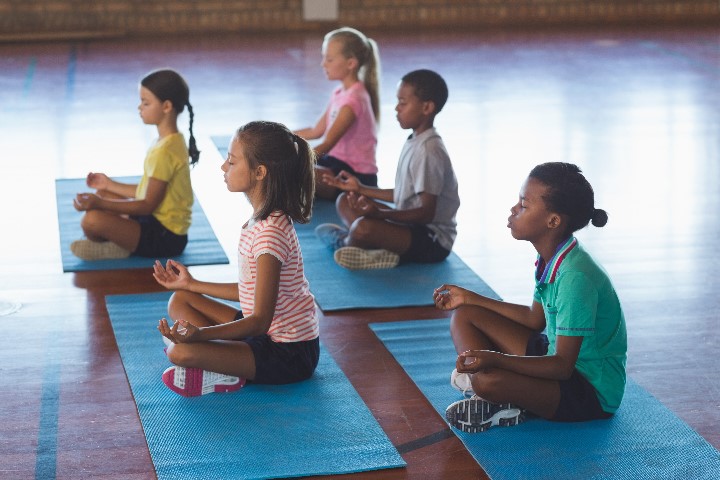The Austin Independent School District is incorporating “mindfulness” practices into the school day, and officials contend the stress reduction, breathing and other techniques are helping students stay focused.


The Austin Independent School District also known as AISD is incorporating “mindfulness” practices into the school day, and officials contend the stress reduction, breathing and other techniques are helping students stay focused.
James Butler, Austin Independent School District’s “Mindfulness Specialist,” told EdSurge the district added mindfulness practices – exercises like yoga, stretching, drawing or listening to music – to the school day as a pilot project in 2016, and he’s now tasked with incorporating the techniques in the district’s 130 schools.
Researchers at the Institute for Advanced Studies in Culture at the University of Virginia both applaud and critique this approach toward character formation. The researchers believe that it is valuable because schools are realizing that there are wider social and cultural factors influencing their students’ behavior. Empathy for the other cannot be achieved until the other is recognized. The character of modern life, compounded by the ubiquitous presence of smart phones, creates the need for mindfulness exercises that return the student to the present and to the reality of others and their feelings. Its strength is also its awareness that we are embodied beings. Liturgies of quieting the mind create the conditions for pro-social behavior.
The effort aims to improve students’ educational experience by helping them cope with traumatic experiences, reduce stress, and focus on the “present,” Butler said.
“(Mindfulness) is a powerful way to address all of our students,” according to Butler. “Just sitting and breathing can be uncomfortable for people. We want to embrace and experience discomfort but in a safe way.”
Austin fifth-grader Addison Green recent spoke to a group of educators at SXSW EDU about how the new approach has helped her control her negative impulses.
“You can ask my school,” she said. “I haven’t punched anybody, so clearly, it has helped my decision-making.”
The initiative, run through the district’s Office of Social and Emotional Learning, has also helped the youngster organize her thoughts. “I think about a lot of things at once, and it helps me separate the two or three (thoughts),” Green said.
First-grader Teo Cardenas said the mindfulness techniques help him to relax. “It gets my body calmer because I’m frozen,” he said.
Junior Xavier Zamarron told EdSurge he didn’t know anything about mindfulness until teachers explained the exercises, but he finds himself using them both in and out of school. Zamarron serves as a mentor in a school Peer Assistance and Leadership Students program and was recently anxious about meeting a new mentee. So Zamarron used “finger breathing” – deep breaths while tracing a finger along his hand – to settle his nerves.
“The first time I went to see my kid, I did not know if he was going to like me or not,” he said. “I was kind of nervous, so I just did some finger-breathing, and I started to feel calmer. My kid likes me.”
The mindfulness practices are part of the district’s effort to cultivate a caring and inclusive community that helps students become more aware of themselves and their classmates. The practices themselves, and how they’re implemented, also encourage students to develop what works best for them.
Butler says “teachers should strive to make students from different backgrounds comfortable by not strictly regimenting what specific mindfulness exercise they need to do to become present with themselves,” EdSurge reports.
However, Institute researchers also question whether the process of creating the conditions of mindfulness is the same thing as creating empathy. This is a variation of the “psychological strategy,” which is a default approach in education. Institute for Advanced Studies in Culture sociologist James Davidson Hunter writes in The Tragedy of Moral Education in America, “The psychological strategy assumes that mental and emotional well-being is the necessary foundation for moral conduct and good character.” But there is little social science evidence to support this assumption. Institute researchers found, “There is little or no association, causal or otherwise between psychological well-being and moral conduct.” So while mindfulness is an improvement over the self-centered distracted student, one must be cautious in assuming that it is the same thing as affirming the value of the other person or promoting acts of compassion or creating a school culture of care. This will demand more than mindfulness exercises.
Educators and Education leaders interested in the Institute’s thoughts about developing moral conduct in students may refer to Hunter’s book, The Tragedy of Moral Education in America.